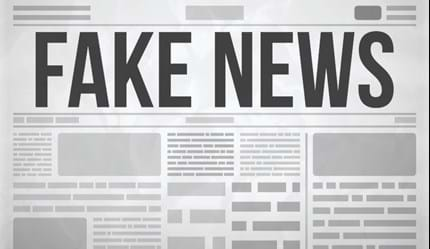
Communicating in a Trump World
As communicators, we are experiencing an unprecedented time — where the rules for brand engagement are changing seemingly moment to moment. We’ve talked to clients, partners and one another about this environment. Last week, we also tuned in to hear from our peers through Facebook Live for the PR Council’s seminar on “Communicating in a Trump World: What the New Administration Means for Our Industry”
Panelists discussed how trends in media channels, public perception of institutions, and the convergence of business and political issues affect how our clients must look at communications strategies and think about audiences and stakeholders. Their insights and our own experiences in the industry led us to seven key takeaways for communicating in this new political climate:
Authentic (client) actions matter
It’s tough to determine how to act in this changing landscape. As clients ask us to counsel them on how to use their brand and voice, below are four questions to ask them:
- What does your company/brand offer?
- How can your company/brand use that at this time to reinforce your position? For example, Lyft donating $1 million to the ACLU and Airbnb offering free housing to refugees and others blocked from entering the U.S.
- Is what you’re going to do in line with your missions and values as a company? Does it align with what your employees believe? A key mistake is that some CEOs cannot divorce personal advocacy from a company’s values. We saw great success and great fallout with our own Brand Agility Index analysis of this year’s Super Bowl — in fact, Budweiser’s decision to focus its ad on immigration led to 97K mentions and high engagement scores, but sentiment was split 50-50 and ignited a new hashtag (#BoycottBudweiser) used on both sides of the debate.
- Is your stand apolitical? If not, are you prepared for the aftermath?
No response is still a response
More and more, companies are expected to take a stance on issues. As the administration meets with industry bellwethers, employees and consumers will expect industry leaders to take a stand. Uber is an excellent case study on how employees and customerseffected change from the CEOafter a massive public fallout on what seemed to be inaction.
Business and politics converged
Issues do not exist independently from businesses. From gay marriage to immigration, trans-gender bathrooms to diversity, stakeholders and audiences demand companies take a stand. These days, audiences make judgements about a brand from two lenses — the consumer and the civic. The civic lens deals with how consumers judge you, your brand and your company. The Trump presidency has made the civic lens more important, thus holding companies accountable for how they take a stand on certain issues that are important to their consumer base.
Media consumption is transformed
Our Stories in Motion research showed that what readers consume and how they consume has changed. The big players — ABC, NY Times, NBC — no longer hold the same level of sway, as many shift over to smaller, more niche outlets. We need to be focused on the media we’re pitching to and make sure we are being more diverse — and go outside the norm to reach a broader audience.
 Fake news is here to stay
Fake news is here to stay
for the foreseeable future, anyway. The public is hyperaware, and wary, of the trend and is being more vigilant than ever. To stay on top of their narratives, brands must pay close attention to what they share and where they show up to stay credible in the eyes of the public. Owned content is the best defense. Brands can help mitigate the effect of fake news and misleading information by making sure to keep transparent content available on their owned channels — website, blogs and social media — and having a response plan in place in case something false does slip through the cracks.
Perception is reality
People’s experiences make up their reality. For instance, in the 2016 election, voters who thought the economy was “good” overwhelmingly voted for Clinton. Voters who thought the economy was “bad” supported Trump by large margins. In the era of “fake news,” communicators need to understand this insight in order to create effective counter-narratives reaching targeted audiences.
PA-GA integration
Public affairs and government affairs need to work in concert when it comes to external and stakeholder engagement, especially at a time when the communications landscape is so murky and given the scale of proactive and reactive communication needs that companies will face. As Trump continues to use Twitter to stir controversy, PA and GA teams need to partner to conduct scenario planning.
It’s a brave new world for the communications industry — change is a constant and brands must remain vigilant. And now more than ever, communications strategy (everything from how you show up and respond on Twitter to what your programs say about your values) will be seen as a critical part of a brand’s business. Comms pros must be ready.
Connect with the authors, Jessica Jeng, Eva Chodosh and Alan Auyeung.
The latest blogs from WE
Decoding Gen Alpha: A Primer on the Next Gen of Consumers
Why Gen Alpha Will Fuel Spending This Season
Why Reputation Is a Business Driver in Healthcare


